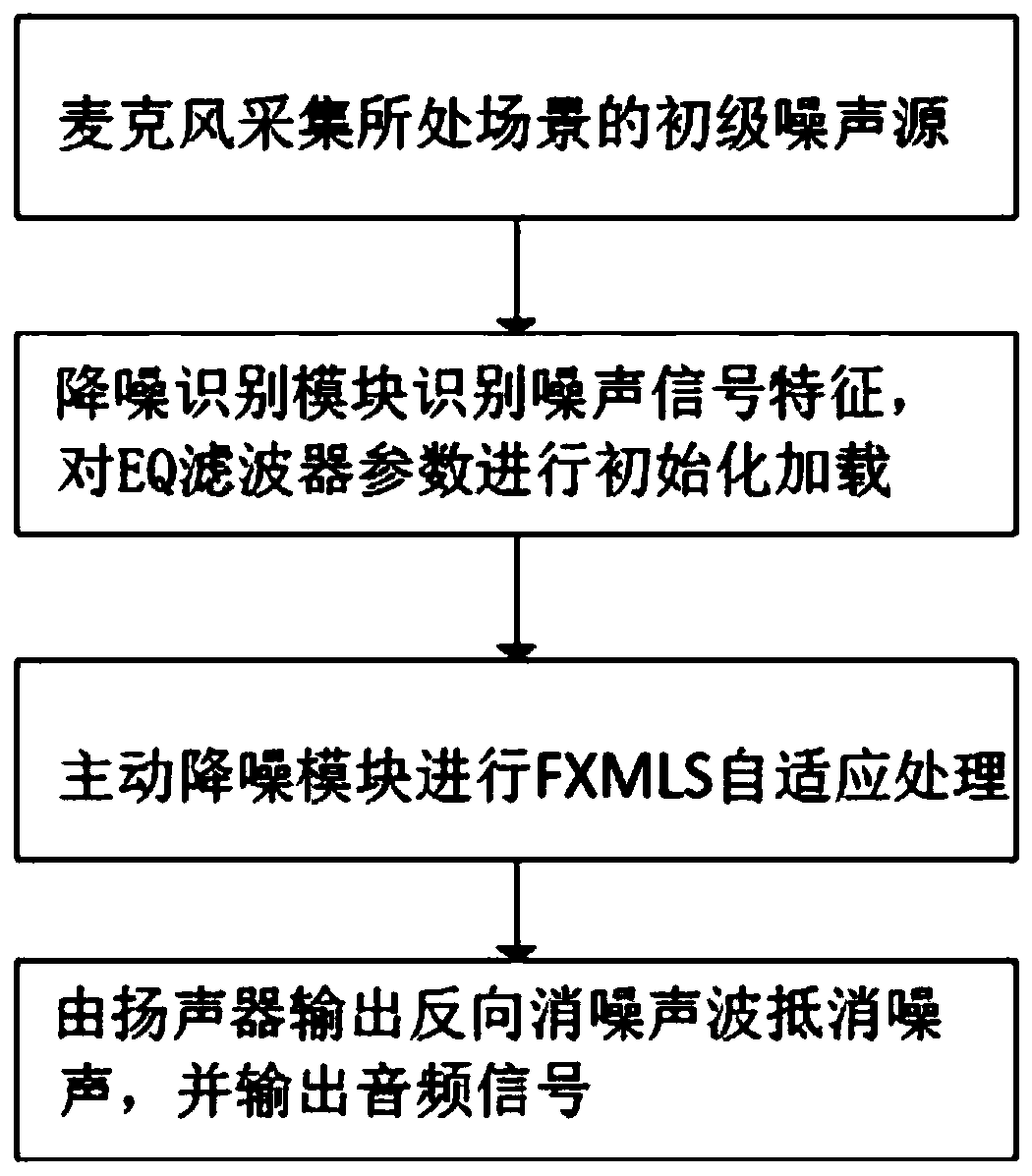Scene adaptive active noise reduction method and earphone
An active noise reduction and adaptive technology, applied in active noise cancellation hearing devices, earpiece/headphone accessories, sensors, etc., can solve the problems of slow convergence of active noise reduction and poor broadband noise control effect.
- Summary
- Abstract
- Description
- Claims
- Application Information
AI Technical Summary
Problems solved by technology
Method used
Image
Examples
Embodiment 1
[0055] combined with figure 1 and figure 2 As shown, a scene adaptive active noise reduction method, including:
[0056] Step S1: the microphone picks up the ambient noise and converts it into a primary noise electrical signal;
[0057] Step S2: The noise identification module extracts noise energy concentration frequency bands and frequency distribution characteristics according to the primary noise electrical signal, and matches with the preset noise patterns in the noise pattern library to determine the noise type;
[0058] Step S3: Select EQ filter parameters from the filter library and load them into the active noise reduction module, the EQ filter parameters include center frequency f, bandwidth Q and gain amount GAIN;
[0059] Step S4: The active noise reduction module performs adaptive filtering on the primary noise electrical signal, and generates a noise cancellation electrical signal to excite the speaker;
[0060] It specifically includes: step S41: the EQ filt...
Embodiment 2
[0069] On the basis of Embodiment 1, the step S44 specifically includes:
[0070] A. Solve the signal e(n) received by the error sensor, specifically:
[0071] The input signal X(n) of the active noise reduction module will reach the error sensor through the main channel P(z) and the secondary channel. The output of the secondary channel is expressed as: At this time, if it is assumed that the weight coefficient of the adaptive filter W(z) remains unchanged in a short period of time L, let r(n)=x(n)*s(n), we can get At this time, the signal e(n) received by the error sensor is the sum of the output signals of the main channel P(z) and the secondary channel, namely:
[0072] e(n)=d(n)+s(n)=d(n)+r T (n)W(n), wherein d(n) is the output signal after the signal X(n) passes through the main channel P(z), and W(n) is the transfer function of the adaptive filter;
[0073] B. Solve the optimal weight coefficient of the adaptive filter, specifically:
[0074] Choose the minimum me...
Embodiment 3
[0081] On the basis of embodiment 2, in conjunction with the attached image 3As shown, there are two EQ filters, one of which is used to receive the secondary channel transfer function identification result The output signal is filtered and then input to the adaptive filter W(z), and another EQ filter is used to receive the signal e(n) received by the error sensor and is filtered and then input to the adaptive filter W(z).
[0082] From the second calculation method of calculating the optimal weight coefficient vector, it can be seen that the noise energy of signals with different frequency distribution characteristics will also be concentrated in different frequency bands. Therefore, in order to enhance the noise reduction effect of the active noise reduction module on a certain scene, The active noise reduction module introduces two EQ filters to enhance the processing of frequency bands where noise is concentrated. After adding the EQ filter, the selected frequency band ...
PUM
 Login to View More
Login to View More Abstract
Description
Claims
Application Information
 Login to View More
Login to View More - R&D
- Intellectual Property
- Life Sciences
- Materials
- Tech Scout
- Unparalleled Data Quality
- Higher Quality Content
- 60% Fewer Hallucinations
Browse by: Latest US Patents, China's latest patents, Technical Efficacy Thesaurus, Application Domain, Technology Topic, Popular Technical Reports.
© 2025 PatSnap. All rights reserved.Legal|Privacy policy|Modern Slavery Act Transparency Statement|Sitemap|About US| Contact US: help@patsnap.com



